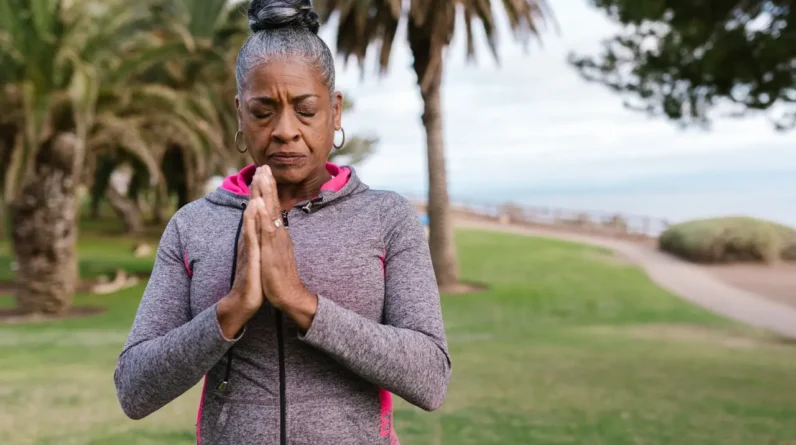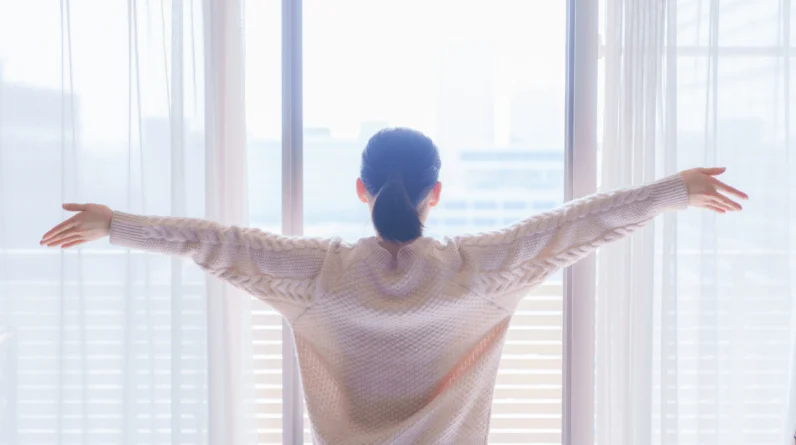
Dragging around old pain is exhausting.
You can pretend you’ve “moved on.” You can tell yourself you’re too busy to deal with it.
But.
What you don’t release, you end up carrying. And that baggage? It shows up everywhere…
- in your relationships
- your self-worth
- your ability to trust
- in your body
I get it. Letting go of old wounds isn’t some tidy little process. It’s messy. It’s uncomfortable. And sometimes, it downright hurts before it heals. But if you want a life that actually feels good – one where you’re not living from old scripts or stuck in patterns that no longer serve you – you’ve got to do the work.
This isn’t about perfection. It’s about freedom. It’s about giving yourself the chance to breathe, to open up space for joy, connection, and peace.
In this article, I’m sharing seven no-BS steps that can help you release the old pain you’ve been carrying, so you can finally start creating a life you love.
7 No-BS Steps to Let Go of Old Pain and Finally Build a Life You Love
Step 1: Get Brutally Honest with Yourself
First things first: you can’t heal what you refuse to face.
Sounds obvious, but let’s be honest… how often do we slap on a smile, tell ourselves “I’m fine,” and stuff the real feelings deep down where no one (not even us) has to look at them?
That strategy works… until it doesn’t.
Buried pain leaks out in other ways: in irritation, in anxiety, in numbness, in the way you keep attracting the same toxic situations on repeat.
So here’s your first invitation: get radically, uncomfortably honest with yourself about what hurts you’re still holding onto. No sugarcoating. No shame. Just truth.
Ask yourself:
- What old pain am I still carrying?
- What situations still trigger an emotional reaction?
- What have I never fully allowed myself to feel?
Grab a journal, pour a cup of something warm, and write it out. The goal isn’t to wallow. It’s to bring what’s hidden into the light. Because what you acknowledge, you can start to release.
Step 2: Feel It to Heal It
Here’s the part most of us like to skip… actually feeling the pain.
It’s tempting to bypass this part. We tell ourselves “It’s in the past” or “I’m over it” while reaching for distractions, such as scrolling, numbing, working too much, drinking, binge-watching, keeping busy. Anything but sitting with the raw ache.
But the truth? You can’t outrun what’s inside you. The only way out is through. If you want to truly release old wounds, you have to give yourself permission to feel, even if it’s uncomfortable. Especially then.
This doesn’t mean spiraling into despair. It means making space to process emotions as they arise.
That might look like:
- Letting yourself cry, without apology
- Screaming into a pillow
- Writing an angry letter you’ll never send
- Talking it out with someone safe
- Sitting quietly and noticing the sensations in your body
Pain is a messenger. It shows up because it needs to be witnessed and honored; not shoved into a dark corner. When you allow yourself to feel it, you start to loosen its grip. And that, right there, is the beginning of healing.
Step 3: Own Your Part (Without Shame)
This one’s tricky, so stay with me. When you’ve been hurt, especially if someone wronged you, it’s natural to focus on them. What they did. How unfair it was. The blame and resentment can feel justified… and honestly, sometimes it is.
But here’s where the real shift happens: at some point, if you want your power back, you have to stop waiting for an apology or closure from someone else. You have to take radical ownership of your own healing.
This is NOT about blaming yourself for what happened. And it’s definitely not about excusing bad behavior or letting people off the hook.
It is about owning what’s yours now:
- How long you’ve let this wound define you
- The old patterns you might be replaying
- The parts of yourself ready to grow stronger, wiser, freer
When you stop seeing yourself as powerless or stuck in victimhood, you reclaim the driver’s seat. You start making choices that move you toward healing.
So ask yourself:
- Where am I still giving my power away to the past?
- What new choices can I make that serve the life I want now?
And remember… this is about self-compassion, not self-criticism. You’re human. You’re learning. And the fact that you’re here, doing this work? That’s strength.
Step 4: Cut the Energetic Cords
Even after the dust has settled… sometimes old pain lingers in ways you can’t quite name.
You think you’ve moved on, but certain people, memories, or patterns still tug at you, like invisible threads that keep pulling you back into the past.
That’s where cord-cutting comes in. I’m not just talking about deleting a number or unfollowing someone (though hey, that can be part of it). I’m talking about consciously releasing the energetic attachments you’ve been holding.
Energetic cords form when emotions, like love, anger, guilt, longing, stay tangled up with another person or a painful experience. You don’t have to believe in “woo-woo” energy work to know this is true; you feel it.
So what helps?
- Visualization: Imagine the cords and cut them. See yourself free
- Journaling: Write the full story… and then burn the paper
- Ceremony: Light a candle and speak your release aloud
- Therapy or bodywork: Move the stuck energy physically and emotionally
The goal isn’t to erase the past. It’s to stop letting it own you. When you cut those cords, you take your energy back—and with it, your freedom.
Step 5: Rewrite Your Inner Script
Here’s a hard truth: old pain doesn’t just live in your memories. It writes the script you live by.
That voice in your head that whispers, “I’m not enough”… “I’ll always get hurt”… “Love isn’t safe”, it’s running on a loop from the wounds you haven’t fully healed.
And if you don’t consciously rewrite that script? It keeps shaping your choices, your relationships, your self-worth.
But here’s the good news: you can change it. You can choose new beliefs. You can rewire those old patterns… one thought, one choice, one small shift at a time.
Start by noticing the old story. What do you tell yourself about love, about your worth, about what’s possible for you? Then challenge it. Ask: Is this really true? Or is it old pain talking? Finally, write a new story. One rooted in healing, strength, and self-trust.
Try simple affirmations like:
- I am worthy of love and respect
- I am safe to be fully myself
- I trust the path unfolding for me
- I release what no longer serves me
Will it feel fake at first? Maybe. But the more you repeat it, the more it becomes your truth. You are not the old story. You get to write a new one.
Step 6: Move Your Body, Move the Pain
Here’s something a lot of people overlook: old pain isn’t just trapped in your mind. It lives in your body too. Think about it, how many times have you noticed tension in your shoulders, knots in your stomach, a tight chest when an old memory surfaces? That’s not random. That’s unprocessed emotion stored in your system.
One of the most powerful ways to release it? Movement.
You don’t have to be a yogi or a marathon runner. Just move intentionally, mindfully.
- Dance around your living room
- Go for a long, grounding walk
- Hit the gym and sweat it out
- Practice yoga or breathwork
- Shake, stretch, move however your body wants
When you move your body, you move the stuck energy too. It helps clear the old, making space for the new. Think of it as somatic spring cleaning; you’re literally helping your body let go of the weight it’s been holding.
Step 7: Choose New Paths (Even If They Scare You)
Once you’ve done all this work… getting honest, feeling, releasing, rewriting… you’ll start to notice something: space. Energy. Possibility. Now comes the exciting (and sometimes scary) part: What do you want to invite into that space?
Releasing old pain isn’t just about letting go. It’s about stepping forward. It’s about choosing new paths that align with who you are now, not who you were when the pain was first written.
This is where you get to:
- Try new things
- Take new risks
- Set new boundaries
- Say yes to what lights you up
- Say no to what drains you
- Dream bigger for yourself
And yes, it might feel uncomfortable because healing often leaves us standing on new ground. That’s okay. Lean into it. Keep choosing the life you want, one small step at a time.
Conclusion
Releasing old pain isn’t linear. Some days it will feel empowering. Other days, heavy.
And that’s normal.
Healing is a process, not a single event. The most important thing? Keep going. Keep choosing yourself and keep choosing your freedom. You deserve a life that feels light, true, and full of possibility; not one weighed down by the past.
And remember, every step you take, no matter how small, matters. You’re doing the work. You’re rewriting your story. And that? That’s something to be proud of.
Photo by RDNE Stock project







